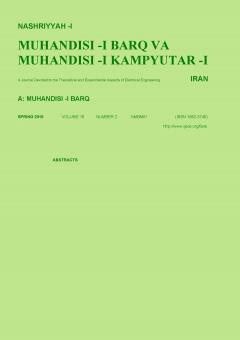-
-
List of Articles
-
Open Access Article
1 - Multipath Error Mitigation of Low-Cost GPS Receiver Using PSO-SVM and GA-SVM Hybrid Methods
Mohammad S. E. Abadi M. H. Refan A. Dameshghi -
Open Access Article
2 - LMI Robust Control Design for SIDO Boost Converter Based on SFG Modelling Method
M. Abbasi Mohammad Reza Alizadeh Pahlavani Ahmad Afifi -
Open Access Article
3 - Torque Ripple Reduction Technique in SRM for Low Speed Range by Employing Fuzzy Logic for Dynamic Controlling of TSF
H. Moradi Cheshmeh-Beigi E. Nouri -
Open Access Article
4 - Identification of Coherent Machines Based on Slow Coherency
S. H. Adeli A. Rabiee -
Open Access Article
5 - Nonlinear Analysis of Jitter Transfer in Charge Pump Phase-Locked loops regarding Channel Length Modulation Effect
H. Dehbovid H. Adarang M. B. Tavakoli -
Open Access Article
6 - The Effect of MIMO Channel Estimator in the Precoder Design of Wireless Sensor Networks
H. Rostami A. Falahati -
Open Access Article
7 - Covariance Matrix Design for SINR Enhancement in Presence of Signal-Dependent Interferers
M. Bolhasani S. Imani S. A. Ghorashi -
Open Access Article
8 - Improving the Power System State Estimation Algorithm Based on the PMUs Placement and Voltage Angle Relationships
A. R. Sedighi M. Sayaf M. R. Taban
-
The rights to this website are owned by the Raimag Press Management System.
Copyright © 2017-2026







